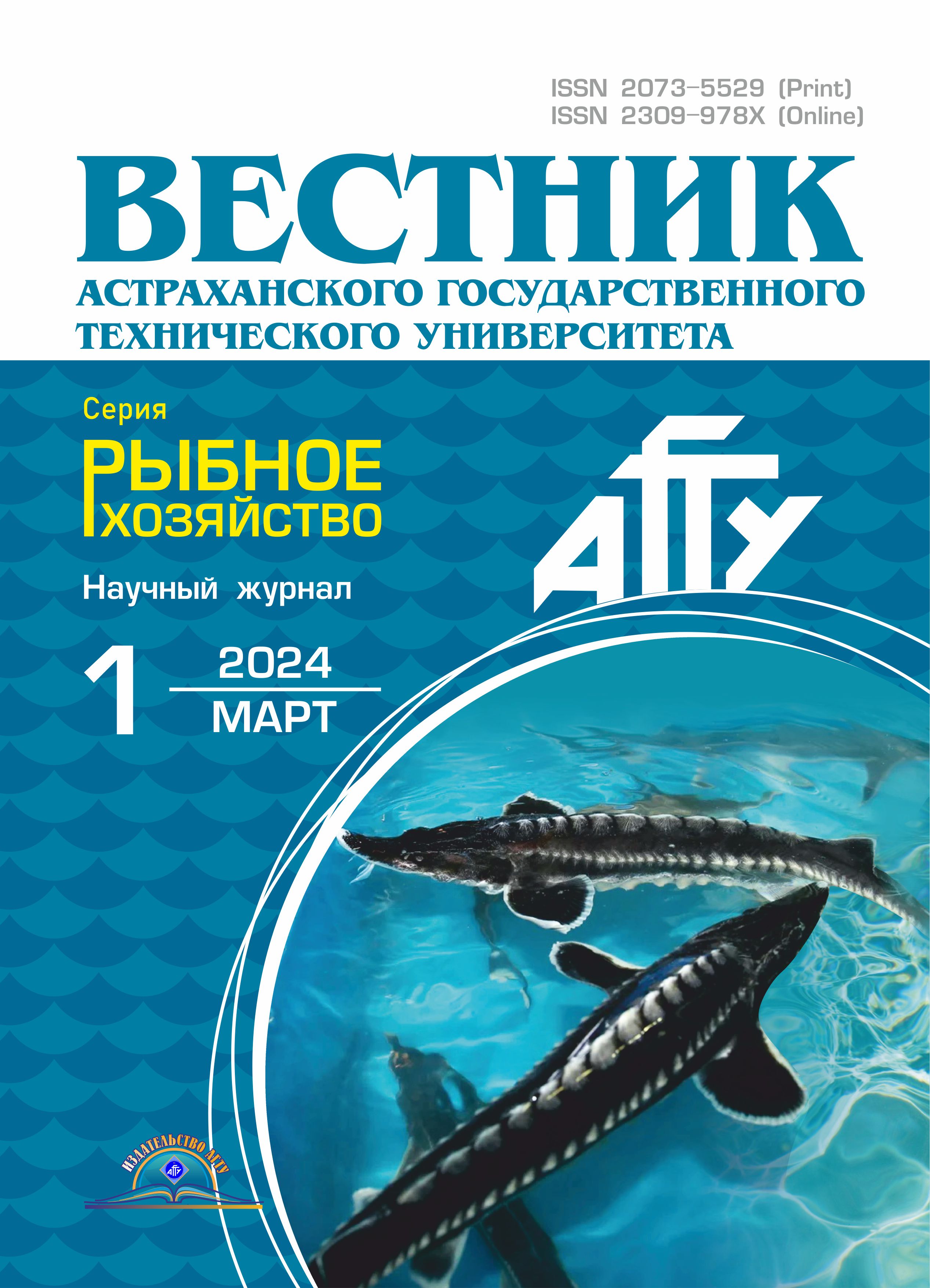Россия
Цель работы – формирование положений для определения комплексной оценки эффективности деятельности рыбодобывающей и рыбоперерабатывающей компании в области экологии, социальной ответственности и в вопросах организации управленческой деятельности. При формировании этой оценки учитываются показатели, которые характеризуют эффективность мероприятий по защите окружающей среды; улучшение условий труда сотрудников, организации корпоративного управления. Для агрегирования этих характеристик предлагаются методы, основанные на положении теории нечетких множеств. Сам вычислительный комплекс по обработке информации о состоянии контролируемых параметров реализован в виде иерархической системы нечеткого вывода и дополнительного блока, который используется для распределения объектов анализа по классам состояния. В состав вычислительного комплекса входят системы нечеткого вывода, основанные на алгоритме Сугено. В результате агрегирования оцениваемых параметров формируется две оценки: одна позволяет ранжировать анализируемые объекты, вторая – соотнести объект анализа с определенным классом состояния. Проведенное моделирование показало, что вычислительный комплекс обладает высокой чувствительностью: если хотя бы одна из входных переменных находится в области низких (плохих) значений, это приводит к уменьшению значения итоговой оценки. Подобное свойство позволяет исключить возникновение массирования «плохих» значений отдельных переменных при «хороших» значениях других переменных. Результатами исследования подтверждена способность комплекса распределять объекты анализа по классам состояния. Результаты могут быть использованы для развития систем корпоративного управления, которые ориентированы для применения на предприятиях рыбохозяйственной отрасли.
управление, предприятие, рыбодобывающая отрасль, обработка информации, оценка комплексной эффективности, система нечеткого вывода
Introduction
Fishing and fish processing enterprises (FFPE) are one of the elements of ensuring food security. The importance of developing this area is emphasized in the State Program of the Russian Federation “Development of the fishery complex” [1]. For the successful functioning of the enterprise, it is important to conduct a timely assessment of its performance indicators and, based on the analysis, make the necessary management decisions.The review [2–7] showed that one of the important types of assessments that are used in determining the integrated efficiency of an enterprise are indicators that take into account information: (i) on the impact of an enterprise on the environment; (ii) the conditions under which employees perform their duties; (iii) the effectiveness of the company's management system organization.
The activity of FFPE is related to the operation of ships that are used to organize the capture, transportation and processing of fish and other types of seafood. The operation of ships is associated with the use of fuels and lubricants, the performance of repair work, and the operation of port equipment. Such activities are accompanied by the accumulation of waste, emissions of fuel combustion products and a number of other factors that may create a threat to the environment. To perform the production tasks of the FFPE the involvement of various specialists is required.
A feature of the work of such specialists is a long stay in the places of fishing and processing of fish raw materials. A separate specificity of the FFPE is the involvement of a large number of partner companies in the organization of business processes for servicing ships and building logistics chains for the delivery of products to markets. The organizational structure
of an FFPE may include various regional divisions. The presence of such factors determines the existence of various types of environmental, managerial and financial risks. Compensation for such risks is carried out through the implementation of timely activities. The decision to carry out these activities is made by the management personnel of the company.
Various software packages based on mathematical methods of information processing have been widely used to organize decision support (DS) for such events in various areas of production activity. The analysis of [5–7] showed that in relation to the issues of DS in the field of enterprise management, this direction requires further development.
The purpose of this paper is to form provisions for determining a comprehensive assessment of the effectiveness of the activities of a fishing and fish processing company in the field of ecology, social responsibility and organizing management activity issues.
Information processing system for decision support to determine the assessment of integrated efficiency
Based on analysis [2–7], it is proposed to introduce the concept of “Assessment of the comprehensive efficiency of an enterprise” – ME.FFPC. This assessment is determined on the base of the aggregation of three macro parameters: (i) assessment of the effectiveness of environmental activities ME.EA; (ii) assessment of the effectiveness of social activities to improve the work of employees ME.SE; (iii) assessment of the effectiveness of corporate governance ME.CG.
The calculation of the macro-parameter ME.EA is based on the aggregation of the values of the following characteristics: x1.VHEA – assessment of the value of harmful emissions into the atmosphere; x2.GGEA – is an estimate of greenhouse gas emissions into the atmosphere; x3.QWP – assessment of the quality of waste processing; x4.WTQ – assessment of the wastewater treatment quality; x5.WCV – assessment of water consumption volumes; x6.ECT – assessment of the energy consumption trend; x7.EMSQ – assessment of the environmental management system quality.
The calculation of the macro-parameter ME.EA is based on the aggregation of the values of the following characteristics: x8.IL – assessment of the in juries level at the enterprise; x9.ACHE – assessment of the activities to protect the health of employees; x10.WL – assessment of the wages level at the enterprise; x11.AILCE –assessment of the activities to improve the living conditions of employees.
The calculation of the macro-parameter ME.CG is based on the aggregation of the values of the following characteristics: x12.CQMS – assessment of the company's quality management system; x13.ERMS – assessment of enterprise risk management system; x14.FCE – assessment of the financial condition of the enterprise.
It is proposed to set the value range of these parameters from 0 to 100 points, where 0 is the minimum value, and 100 is the maximum value. The numerical value of these parameters is determined by experts based on the analysis of reports on the necessary measures, inspection of objects. The model for obtaining the value of the assessment of the complex efficiency of the FFPE – ME.FFPC is proposed to be presented in the form:
ME.FFPC = ϜE.FFPC (ME.EA, ME.SE, ME.CG);
ME.EA = FE.EA (x1.VHEA, x2.GGEA, x3.QWP,
x4.WTQ, x5.WCV, x6.ECT, x7.EMSQ); (1)
ME.SE = FE.SE (x8.IL, x9.ACHE, x10.WL, x11.AILCE);
ME.CG = FE.CG (x12.CQMS, x13.ERMS, x14.FCE)
where ϜE.FFPC, FE.EA, FE.SE, FE.SE, FE.CG are operators for processing information about the value of input variables. A feature of the variables that are used to obtain estimates of ME.FFPC, ME.EA, ME.SE and ME.CG is the uncertainty associated with the formation of an operator for their aggregation, and the experts of the respective fields of knowledge have information about the features of these variables interaction. Therefore, taking into account [8, 9], for the implementation of the operators ϜE.FFPC, FE.EA, FE.SE, FE.CG, it is proposed to use the provisions of the theory of fuzzy sets and fuzzy inference.
The essence of such provisions lies in dividing the range of values of input and output variables (in the framework of ongoing research, input variables are described using x, output variables using y) into a sequence of intersecting intervals, each interval is associated with a term τ, that describes the state of the variable, and each term is associated with a membership function (MF). The MF shows the degree of belonging of a certain “clear” value of a variable to the semantic meaning of a certain term.
The implementation of the operator for aggregating input variables and generating output variables is carried out using rules of the form:
![]()
where χ1 ÷ χm are “fuzzy” mappings of input variables x1 ÷ xm; ψ are “fuzzy” mapping of the output variable y; ![]() and τy, q are the values of terms that describe the values of variables using terms; ξn is the coefficient of confidence in the rule; n is the number of the rule; m is the number of the variable. The rule (1) has a multiple input single output (MISO) structure. As part of further research, it is assumed that all rules have such a structure. The transformation from the “clear” value of the input variable into a fuzzy form is carried out using the MF:
and τy, q are the values of terms that describe the values of variables using terms; ξn is the coefficient of confidence in the rule; n is the number of the rule; m is the number of the variable. The rule (1) has a multiple input single output (MISO) structure. As part of further research, it is assumed that all rules have such a structure. The transformation from the “clear” value of the input variable into a fuzzy form is carried out using the MF:
χ = μτ(x) (2)
where μτ is the operator for converting the “clear” value of the variable x into fuzzy χ. The implementation of the MF is carried out using triangular, trapezoidal, Gaussian and other types of functions. More details about the MF used in fuzzy inference system (FIS) are described in various works on the theory of fuzzy sets, for example, in [8, 9]. The complete set of rules that describe the transformation of the values of input variables into the value of the output variable forms the knowledge base:
![]()
The transformation of the values of input variables into an output variable is implemented using various fuzzy inference algorithms. Examples of such algorithms are the Mamdani algorithm or the Sugeno algorithm. As part of further research, FIS based on the Sugeno algorithm is used, since its implementation requires fewer mathematical operations at the stage of accumulation and defuzzification (transition from a fuzzy value to a clear one) of the output variable.
One of the problems in the implementation of fuzzy inference systems is the “curse of dimensionality”. The problem is associated with a significant increase in the number of rules (1) within the knowledge base (2) with an increase in the number of variables and the number of terms, which are used to describe each of the variables. Hierarchical fuzzy inference systems (HFIS) are used to eliminate the “curse of dimensionality” [8, 10, 11]. The implementation of HFIS is carried out as follows: the range of output variables is divided into several groups (as a rule, a group of variables has a common feature). For each group, a separate FIS of the first level of the hierarchy is being developed. These FISs form an array of intermediate output values. To aggregate these variables, FISs of the next level of the hierarchy are formed. This operation is performed until the FIS is formed, which forms the value of the target variable y. According to the structure, the HFIS is a tree-like graph, where the “leaves” of the graph are the input variables x, the nodes of the graph are the FISs of various levels of the hierarchy, the “root” of the graph is the variable y, which is formed at the output of the computing complex. Taking into account [12], it can be noted that with an increase in the number of hierarchies, the output pattern of the HFIS becomes stepwise. This type of regularity makes it possible to use HFIS to distribute objects of analysis by state classes. The name of the state class corresponds to the name of the term, which describes the state of the output variable. To enhance such an “effect”, taking into account [12], it is advisable to build a sequence of FIS, which is used to form the value of the final output variable (supplies the value to the “root” vertex of the graph). As part of the ongoing research, such a “sequence” of FIS is proposed to be called the “Value Grouping Block”.
Thus, to form an estimate of the complex efficiency of FFPE – ME.FFPC, it is proposed to use a hierarchical fuzzy inference system, the structure of which is shown in Fig. 1.
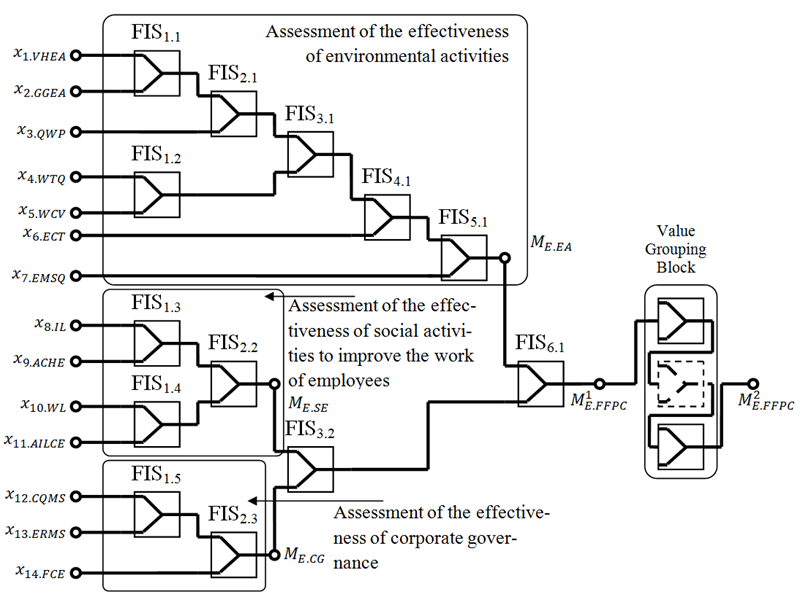
Fig. 1. Computing complex for determining assessment
of the integrated efficiency of the fishing and fish processing enterprise: FIS1.1, FIS1.2, FIS2.1, FIS3.1,
FIS4.1, FIS5.1 used for calculated assessment of the effectiveness of environmental activities – ME.EA; FIS1.3, FIS1.4,
FIS2.2 used for calculated assessment of the effectiveness of social activities to improve the work of employees – ME.SE;
FIS1.5, FIS2.3 used for calculated assessment of the effectiveness of corporate governance – ME.CG;
FIS3.2 used for aggregation parameters ME.SE and ME.CG; FIS6.1 used for calculated assessment
of the comprehensive efficiency of an enterprise – ME.FFPC
The values of the variables that are used to determine the assessments are fed to the input of the HFIS: assessment of the effectiveness of environmental activities ME.EA; assessment of the effectiveness of social activities to improve the work of employees ME.SE; assessment of the effectiveness of corporate governance ME.CG. After processing information about
the state of the parameters that affect the values
of ME.EA, ME.SE and ME.CG, two assessments are formed: – is formed before entering “sequence” of the same type of FIS; – is formed after the “Value grouping block”.
Given that all input variables have the same range of values (from 0 to 100 points), it is proposed to use a single set of terms to describe them, and to use an identical set of membership functions to describe terms. This set of terms looks like:
T = < NB, NMN, NMM, M, PMM, PMB, PB >,
the terms have the following semantic meanings: NB – low; NMN – rather low; NMM – rather medium than low; M – medium; PMM – rather medium than large; PMB – rather large; PB – large value of the variable. To describe the terms, trapezoidal functions are used, the form of which is shown in Fig. 2.
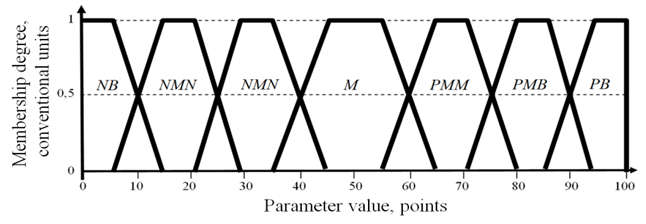
Fig. 2. The membership functions of input variables
Constant values were used to describe the terms of output variables. Each of the terms corresponded to the following numbers: NB – 0; NMN – 16.6; NMM – 33.3; M – 50; PMM – 66.67; PMB – 83.33; PB – 100 points.
When forming the knowledge base for FIS, it was taken into account that the computing complex should have the same sensitivity to all variables. This allows the complex to respond equally to “low” or “bad” values of variables that are taken into account when forming a comprehensive assessment. This makes it possible to eliminate the “effect” of masking a small number
of “bad” values of some variables, behind the “good” values of the remaining variables, which are used in calculating the assessment of complex efficiency.
An additional feature of computing systems based on the use of FIS is the possibility of adjusting the list of aggregated variables. Such an adjustment may be required if it is necessary to adapt the computing complex to the needs of a particular enterprise or its regional division.
The use of the final estimates and , together with the values of the input parameters on the basis of which they were obtained, allows you to set the order of control actions and recommend their types. These management actions should be aimed at improving the efficiency of the functioning and investment attractiveness of the FFPE.
Study of the proposed computing complex
The study of the proposed complex based on HFIS was carried out in two stages. As part of the first stage, the sensitivity of the complex to changes in the values of each of the variables that are taken into account in the formation of an assessment of the complex effectiveness was studied. As part of the second stage, the ability of the complex to distribute the objects of analysis by state classes was studied.
The first stage was carried out as follows: the variable to be estimated was selected and a value of 5 points was applied to its input; the same values were applied to the inputs of other variables, first also 5 points, then these values increased by 5 points. After the value of 100 points was applied to the inputs of all variables, the value of the studied variable increased by 5 points, and the value of 5 points was also applied to the moves of the remaining variables, and then these values increased by 5 points. The experiment step ended at the moment when the inputs of all variables had a value
of 100 points. After that, another variable was chosen and the sequence of the described actions was repeated for this variable.
According to the evaluation results, for each of the variables, two regularities were formed: the first one shows the change in the output value of the assessment and the second one shows the change in the output value of the assessment . The result of assessing the sensitivity of the computing system to changes in the variable is shown in Fig. 3 .
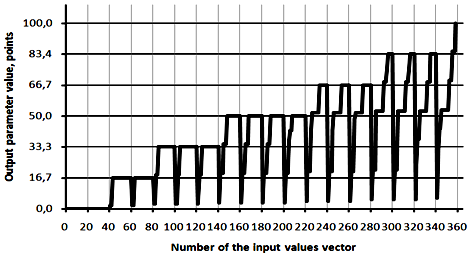
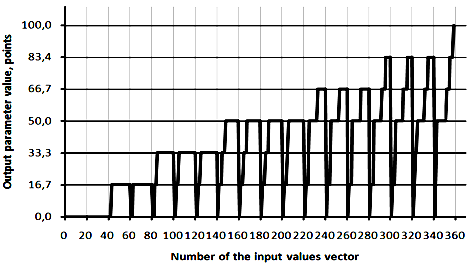
a b
Fig. 3. The result of the sensitivity study of the proposed computing system for the variable x1.VHEA:
a – pattern of change ; b – pattern of change
The regularities for other “input” variables, which are given in the model (1), had a similar form. The analysis of this stage of the experiment showed that the “low” values of the evaluated variable had a significant impact on the final result of information processing (variables and ). This can be interpreted as the presence of high sensitivity in the computer system under study. This allows the system to react to sharp deviations in the values of the variables taken into account. And also the system does not have the effect of “masking” the low value of one of the evaluated variables with high values of other variables that affect the value of the final grade.
In the second stage of the experiment, the vectors of values that characterized the state of the object of evaluation were fed to the input of the HFIS. The range of values for each element of the vector (input variable) was chosen as a random number from the range from 0 to 100 points. In total, 450 vectors were fed to the input of the computer complex. After the experiment, the results were sorted in ascending order with respect to the assessment . The results of the experiment are shown in Fig. 4.
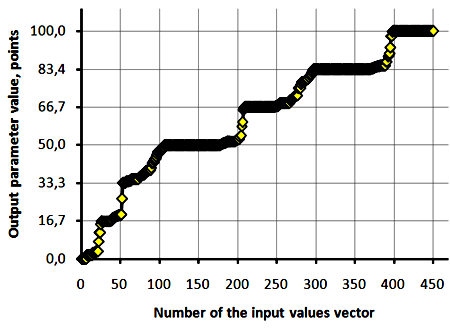

a b
Fig. 4. The result of the study of the classification ability of the proposed computing system:
a – pattern of change in the assessment ;
b – pattern of the output assessment , which was obtained after passing the value grouping block
The pattern of change in the assessment is shown in Fig. 4, a. The pattern of the output assessment , which was obtained after passing the value grouping block, is shown in Fig. 4, b.
Analysis of Fig. 4, a showed that a significant part of the output estimates were grouped in the area of numerical values of the terms that described the output variable. However, there are deviations from the meanings of the numbers by which these terms are described. Analysis of Fig. 4, b showed that after passing through the value grouping block, the output estimates correspond to certain values of the terms, with the help of which the output variable is described. This allows us to conclude that the computing complex has distributed the objects of analysis according to the corresponding state classes.
In the framework of the ongoing research, the class of the state corresponded to a certain semantic meaning of the term of the output variable.
Conclusion
As a result of the research, provisions have been formed for determining a comprehensive assessment of the effectiveness of the activities of a fishing and fish processing company. When forming this assessment, indicators are taken into account that characterize the effectiveness of measures in such areas as: environmental protection; improvement of working conditions for employees, organization of corporate governance. The methods of fuzzy set theory are used as a theoretical basis for the proposed provisions. The implementation of the computing complex on the basis of the proposed provisions is made in the form of a hierarchical system of fuzzy inference and an additional block, which is designed to distribute output values by state classes. The output assessment of the state of the analyzed enterprise consists of two parameters: the first parameter is used to obtain a numerical value; the second parameter shows which state class the object of analysis can be assigned to. The number of state classes corresponds to the number of ranks used in the framework of existing methods for assessing the integrated efficiency of enterprises applied by analytical agencies.
The combined use of the values of the parameters that are aimed to obtain an assessment of the integrated efficiency and the values of this assessment themselves make it possible to prioritize and recommend the type of control action that must be taken at the enter prise to increase its investment attractiveness.
Thus, the results obtained can be used to solve the problems of developing corporate governance systems that are focused on use in the fishery industry.
1. Об утверждении государственной программы Российской Федерации «Развитие рыбохозяйственного комплекса»: постановление Правительства РФ от 15 апреля 2014 г. № 314 (ред. 13 апреля 2021 г.). URL: https://base.garant.ru/70644222/ (дата обращения: 15.04.2023).
2. Wang C., Zhao M., Zhang Z. Research on the Relationship Between Corporate Governance Performance and Financing Cost Under the Background of ESG Theory // 2020 Management Science Informatization and Economic Innovation evelopment Conference (MSIEID) (Guangzhou, China, 18–20 December 2020). IEEE, 2020. DOI:https://doi.org/10.1109/msieid52046.2020.00064.
3. Методология оценки ESG. URL: https://www.acra-rat-ings.ru/upload/iblock/57a/kuqqu9yivp38zlqzp0j8qxh2zl79i9d9/20210921_ACRA_Methodology_ESG.pdf (дата обращения: 12.04.2023).
4. Методология присвоения некредитных рейтингов, оценивающих подверженность компании экологическим и социальным рискам бизнеса, а также рискам корпоративного управления (ESG рейтингов). URL: ra-national.ru/sites/default/files/Методология присвоения ESG рейтингов.pdf (дата обращения: 12.04.2023).
5. Кручинина В. М., Рыжкова С. М. Анализ потенциала инвестиционной привлекательности рыбохозяйственного комплекса России // Вестн. Воронеж. гос. ун-та инженер. технологий. 2020. Т. 82. № 1 (83). С. 322–332.
6. Александрова М. А., Васильев А. М., Карташов М. В. Оценка морских экосистемных услуг на базе основных промысловых биоресурсов как основа устойчивого состояния большой морской экосистемы и сохранения биоразнообразия // Вода и экология: проблемы и решения. 2018. № 2 (74). С. 70–86.
7. Мнацаканян А. Г., Корнева О. В. Управление фи-нансами береговых рыбоперерабатывающих предприя-тий в условиях кризиса // Финансовая аналитика: про-блемы и решения. 2015. № 33 (267). С. 18–28.
8. Штовба С. Д. Проектирование нечетких систем средствами MATLAB. М.: Горячая линия-Телеком, 2007. 288 с.
9. Пегат А. Нечеткое моделирование и управление. М.: Бином. Лаборатория знаний, 2017. 800 с.
10. Mutlu B., Sezer E. A., Ali Akcayol M. End-to-End Hierarchical Fuzzy Inference Solution // 2018 IEEE International Conference on Fuzzy Systems (FUZZ-IEEE) (Rio de Janeiro, Brazil, 08–13 July 2018). IEEE, 2018. DOI:https://doi.org/10.1109/fuzz-ieee.2018.8491481.
11. Adel Rastkhiz E., Akbarzadeh-T. M.-R. A Specificity-Based Approach to Semantic Interpretation and Hierarchical Complexity Reduction in Fuzzy Models // IEEE Transactions on Fuzzy Systems. 2020. V. 29. Iss. 9. P. 2661–26741. DOI:https://doi.org/10.1109/tfuzz.2020.3006528.
12. Сорокин А. А. Усовершенствование информационно-аналитических комплексов на основе иерархических систем нечеткого логического вывода // Управление большими системами. 2020. № 88. С. 99–123.

